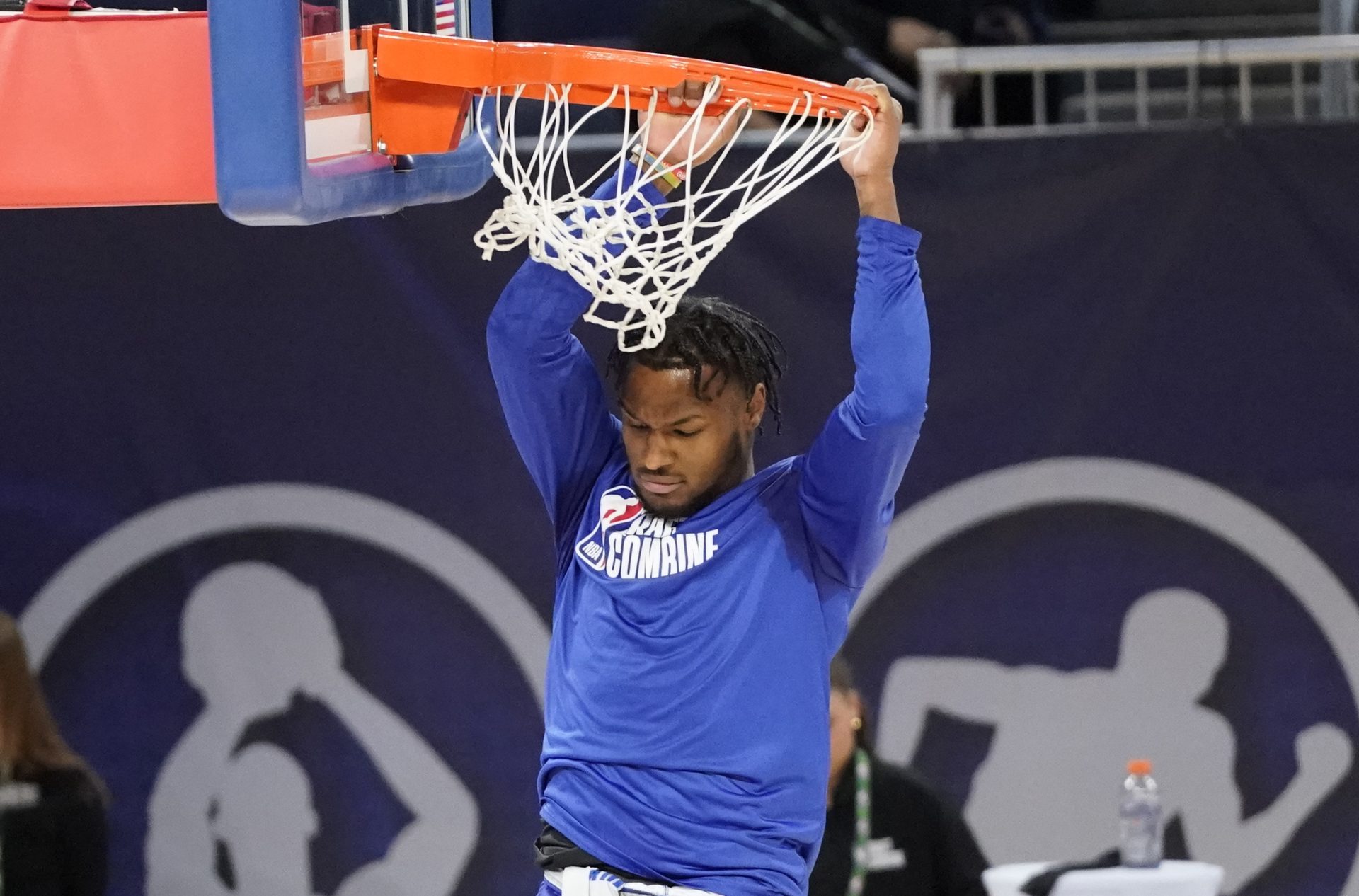When it comes to vertical leap numbers at the NBA Draft Combine, fans always get hyped. Everyone wants to see who can get close to the gold standard: a 40-inch vertical. But here’s the truth — only about 1% of college players ever hit that mark. So when someone gets close, it’s an instant headline.
But do those numbers really show how athletic a player is during a game? Not always. What looks impressive on paper doesn’t always translate to game-time performance.
Before we get caught up in the numbers, let’s break down why those flashy combine stats don’t always mean much on the court.
Why Do NBA Combine Vertical Jumps Fail To Translate?
Auburn forward Johni Broome logged just a 24.5-inch standing vertical at the Combine. Fans weren’t impressed, calling the number low by NBA standards. On the other end, Baylor guard VJ Edgecombe turned heads with a 38.5-inch vertical. That’s elite, and it sparked buzz online. Anytime someone gets that close to 40 inches, it’s a big deal.
But let’s not jump to conclusions based on Combine leaping alone. A high vertical doesn’t always equal game-time dominance.
Take Iman Shumpert, for example. He posted a 42-inch vertical at the Combine and played for several teams over 10 NBA seasons, including the New York Knicks, Cleveland Cavaliers, and Brooklyn Nets. But now that he’s retired, how many fans still talk about him?
Or think about the 2019 NBA Dunk Contest champion, Hamidou Diallo. He posted an incredible 44.5-inch vertical jumper. Yet today, his overall game hasn’t turned him into a star. He currently plays for the Shanxi Loongs in China’s CBA.
👀 every dunk from 2019 #ATTSlamDunk champion @hamidoudiallo! #ThunderUp #StateFarmSaturday pic.twitter.com/MKNtRR4CIN
— NBA (@NBA) February 17, 2019
Here’s the thing: Combine vertical jumps happen in a controlled setting. No defenders. No fatigue. No game pressure.
But in a real game? Players have seconds to react. They’re adjusting in mid-air, reading defenses, and battling contact. The numbers from Combine tests don’t always hold up when the lights are bright and the clock is ticking.
Mubarak Malik, former director of performance for the Knicks, said it best — the Combine is great for measuring raw athleticism and boosting a young player’s confidence. But those numbers aren’t guarantees.
“For the NBA, it’s an opportunity to display the athleticism of its players,” he says, “For the players at the Combine it’s a great way to get to know the league and gain confidence in their ability.”
Strong Combine numbers give prospects a solid first impression—and that matters. It helps teams gauge potential and athletic upside. But once the games start, those same players will need training, reps, and real-time development.
Otherwise, even with a 44-inch vertical on paper, they’ll fade from the spotlight fast.
College Sports Network has you covered with the latest news, analysis, insights, and trending stories in football, men’s basketball, women’s basketball, and baseball!


